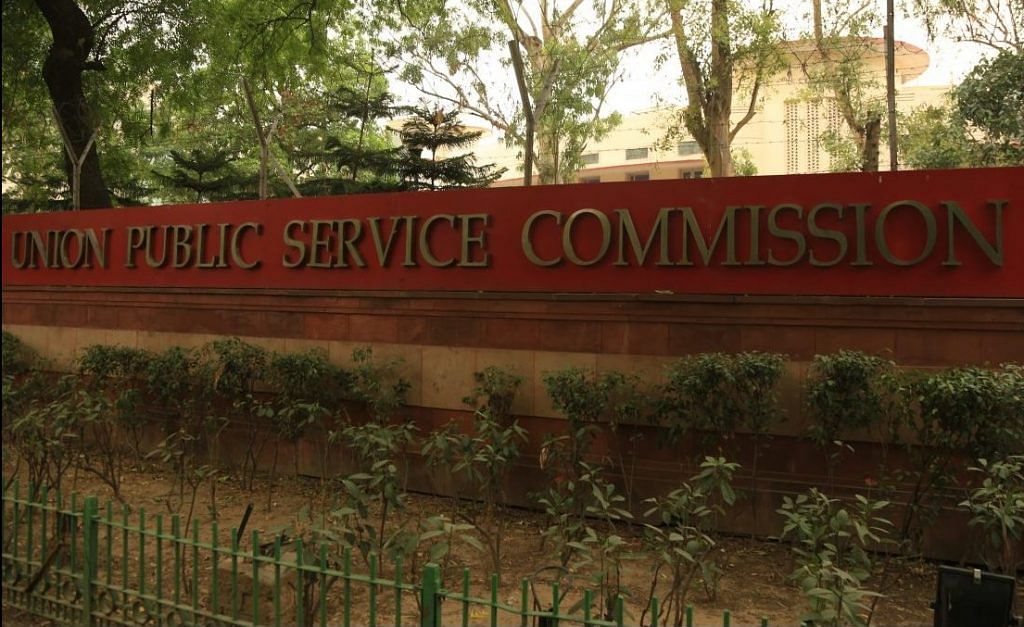New Delhi: The number of civil service candidates shortlisted by the Union Public Service Commission (UPSC) has fallen by almost 40 per cent since 2014, a development that comes as the central government continues to grapple with a substantial shortage of civil servants.
While the UPSC had shortlisted 1,236 candidates in 2014, the number fell to just 759 in 2018. In the intervening years, the number of selected candidates was 1,078, 1,099 and 990 respectively.
However, for the 2019 civil service exam, whose results will be declared next year, the commission will recruit approximately 896 officers.
‘UPSC has no say’
The UPSC is mandated to conduct examinations for a range of government jobs across the country, including the prestigious IAS, IPS and IFS. However, it simply carries out recruitments against the number of vacancies released by the government in different services.
“The UPSC has no say in the number of recruitments. We simply conduct the exam and shortlist as many candidates as the government needs,” a UPSC official said.
The number of shortlisted candidates is always lower than the vacancies released by the government. For example, in 2018, the number of vacancies released by the government was 812, against which the UPSC recruited 759 candidates. This, the official said, is because of a “well-defined formula.”
“A lot of times, people from the reserved categories qualify in the general category, and then if they get a better service under the reserved category, they again move from general to reserved. Because of this, the intake reduces,” the official said. “But this is a well-defined formula, and it is kept in mind when the Department of Personnel and Training releases the vacancies.”
What has led to the shortfall
The question remains why the government is reducing intake if there’s a massive shortfall of civil servants. Some argue that the trend reflects the Modi government’s bid to have a thinner bureaucracy, but government officials highlight other reasons as well.
Officers for the All India Services (IAS, IPS and IFS) and the Central Civil Services (Group A and B) are recruited through the UPSC exam each year.
The government is facing a shortage of officers in all these services. According to DoPT data from last year, 1,449 IAS posts, 970 IPS posts and about 560 IFS posts are lying vacant.
Yet, the recruitment in the three services has remained constant over the last five years, with the government recruiting around 180 IAS, 150 IPS and 30-45 IFS officers each year.
Why not increase recruitment?
So, why does the government not increase the recruitment in these services?
“One cannot fill the shortage in one or two years,” explained a senior DoPT official, who did not want to be named.
“If we try to fill up the vacancies at once, it will create cadre management issues for us in the long run. Each officer has to have a career of 30-35 years in service, but higher positions are limited. That is why we need to recruit in a way such that people can be duly promoted and there isn’t widespread frustration among officers.”
Also read: There’s a drop in Muslims clearing UPSC exam this year, but it’s not all bad news
Numbers of IRS officers going down
According to the data, there are over 15,000 officer vacancies in Group A services (including the Indian Revenue Service, Indian Postal Service, Indian Statistical Service, etc.), and over 26,000 officer vacancies in Group B services (which include the Armed Forces Headquarters Civil Service, Pondicherry Civil Service, etc.). Yet, the recruitment in both these groups of services has been going down drastically.
While in 2014, the government released a vacancy of 710 seats in Group A services, this number fell to 384 in 2018.
“The reason you see a reduction in UPSC recruitment is mainly because the number of IRS officers being recruited has been going down. Most of the reduction is happening there,” the DoPT official explained.
“Due to widespread digitisation, computerisation, data networking etc., the government’s requirement for IRS officers has been going down. Besides, with GST coming in, the need for manual intervention has further reduced.”
Another government official agreed about the IRS officers. “There is a restructuring of the service that’s going on…So the number of new recruits is being reduced,” the official said.
Also read: Don’t pick state officers for IAS posts, they could compromise poll process: IAS body
Group B — maximum vacancy, maximum variation
For Group B services, which have the highest number of vacancies, the recruitment has varied dramatically each year.
Between 2014 and 2018, the government released 292, 61, 231, 121 and 68 vacancies respectively, showing no particular pattern of increase or decrease.
“Given that the vacancies are highest in these services, the recruitment pattern is somewhat random,” explained another DoPT official. “It is possible that in a certain year, a high number of candidates are shortlisted to fill the vacancies, and that is why the next year, the recruitment has to be reduced considerably. This is how the system keeps running.”
